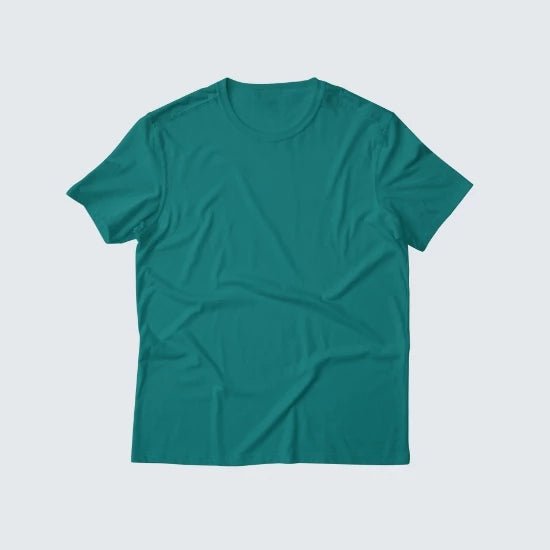
Thermal Printing: A Comprehensive Guide for Beginners
Share
introduction
Sublimation printing is the process of transferring images or text from a special paper to another surface using heat and pressure. This method is used in many fields and industries, such as advertising, gifts, clothing, fabrics, and more. Sublimation printing is characterized by its ease and speed, making it a preferred choice for many users and manufacturers.
In this article, we'll learn what heat printing is, how it works, its application areas, and how to learn it. We'll also provide some tips and advice for getting the best results from this innovative and exciting method.
Thermal printing summary
| The question | The answer |
|---|---|
| What is thermal printing? | The process of transferring images or text from a special paper to another surface using heat and pressure |
| What are its application areas? | Advertisements, gifts, clothing, fabrics, ceramics, metals, glass, wood, plastics, etc. |
| What are its features? | Ease, speed, quality and variety |
| What are its requirements? | Printing paper, ink, machine, and product to be printed on |
| What are its types? | Solid ink thermal printing, liquid ink thermal printing, and sublimation ink thermal printing |
| How much does it cost? | Depends on the type of printing, product, quantity, quality and supplier. |
| What are her projects? | Design and production of cups, mugs, T-shirts, caps, medals, shields, pictures, paintings, posters, sportswear, bedspreads, pillows, toys, gifts, souvenirs, etc. |
| How do you learn it? | By searching for scientific, applied and experimental sources and participating in courses, workshops, forums and specialized groups |
What is thermal printing?
Sublimation printing is a method that uses a heat press to transfer images or text from special printed paper to another surface. This process relies on the ink's ability to change its state from solid to gas or from liquid to solid when exposed to a specific temperature. The image or text is printed on the printed paper using a special printer, which then places it over the product to be printed. The sublimation press then passes through a sublimation machine, which provides the necessary heat and pressure to transfer the image or text to the product. This process produces clear, permanent images that are resistant to water, scratches, and fading.
How does thermal printing work?

The method by which thermal printing works depends on the type of ink used. There are two main types of ink used in thermal printing:
- Solid ink: Ink that transforms from a solid state to a gaseous state when exposed to high temperatures, without passing through the liquid state. The image or text is printed on the paper using a laser printer, then placed over the product and pressed with a press at a temperature of 180 to 200 degrees Celsius and high pressure for 10 to 20 seconds. The ink turns into a gas and penetrates the surface layer of the product, forming a permanent and durable image.
- Liquid ink: Ink that changes from a liquid to a solid state when exposed to moderate temperature, without passing through the gaseous state. The image or text is printed on paper using an inkjet printer, then placed over the product and pressed with a heat press at a temperature of 60 to 80 degrees Celsius and gentle pressure for 5 to 10 seconds. The ink solidifies and adheres to the product's surface layer, creating a smooth, glossy image.
Application areas of thermal printing

Thermal printing is used in many fields and industries, thanks to its advantages, versatility, and quality. Some of these fields are:
- Advertising: in the production of billboards, posters, banners, flyers and brochures.
- Gifts: such as souvenirs, promotional and personal products, such as cups, mugs, t-shirts and caps.
- Clothing: such as fabrics and textiles, such as shirts, blouses, dresses, trousers, jackets, and sportswear.
- Ceramics: pottery and porcelain, such as plates, dishes, and cups.
- Metals: such as aluminum, steel, copper, nickel, gold, and silver.
- Wood: wood, bamboo, straw, paper, cardboard and other wood materials.
These are some of the areas where heat transfer printing is used, but not all. You can use heat transfer printing in any field you desire, provided the product to be printed on can withstand heat and pressure. You can also innovate and experiment according to your taste and capabilities.
Features of thermal printing

Thermal printing has numerous advantages and benefits that make it a preferred method for many users and producers. Some of these advantages are:
- Ease: Easy to learn, apply, and operate. No special skills, complex equipment, or hazardous chemicals are required. All you need is printing paper, ink, a machine, the product to be printed on, and a few simple steps.
- Speed: Fast production and delivery. Images or text can be printed on products in minutes, rather than days or weeks. Small or large quantities can be printed with the same quality and efficiency.
- Quality: The quality of the images and text produced is clear, crisp, colorful, consistent, and in harmony with the product. The images are also resistant to water, scratches, fading, peeling, and distortion, ensuring their stability and durability.
- Versatility: This method is compatible with a variety of fabrics, clothing, textiles, paper, metal, and other materials. It also accommodates a variety of product shapes, sizes, colors, and designs, providing a wide range of options for users and producers.
- Economic feasibility: This method consumes small amounts of ink, paper, and electricity compared to other printing methods. It also reduces costs, waste, residue, and pollution, making it environmentally and budget-friendly.
These are some of the advantages of thermal printing, but not all. You can discover more benefits by trying this method for yourself and seeing the amazing results you achieve.
Thermal printing supplies

To perform thermal printing, you need some basic supplies and equipment, which are:
- Printing paper: Special paper used for printing images or text using a special printer. Printing paper types vary depending on the type of ink used in the printing process. There are solid-ink printing paper and liquid-ink printing paper. Printing paper sizes also vary depending on the size of the product to be printed on. There are A4 printing paper, A3 printing paper, and others.
- Ink: The colored substance used to print images on paper. Ink types vary based on how it changes when exposed to heat, including solid ink and liquid ink. Ink colors also vary depending on the images to be printed.
- Heat press: A device used to transfer images from the printing paper to the product using heat and pressure. Presses vary depending on the product type, including regular presses, pneumatic presses, and others.
You can use other supplies as needed and desired, such as templates, scissors, tweezers, rulers, scales, stickers, labels, etc.
Thermal printing cost

The cost of thermal printing depends on several factors, such as:
- Printing Type: The cost of thermal printing varies depending on the type of ink used. Thermal printing with solid ink is cheaper than thermal printing with liquid ink or sublimation ink, because solid ink consumes less ink, paper, and electricity.
- Product Type: Simple and inexpensive products are less expensive than complex and expensive products, because simple and inexpensive products require lower temperature, pressure, and shorter printing time.
- Product size: Small and light products are cheaper than large and heavy products, because small and light products use less ink, paper, and printing machine.
- Product Quantity: Small, limited quantities are more expensive than large, continuous quantities, because small quantities require repeated operations, cleaning, and maintenance of the machine, ink, and paper, while large, continuous quantities enjoy the advantages of mass production, discounts, and promotions.
- Product Quality: High-quality, well-crafted products are more expensive than low-quality, mediocre products, because high-quality, well-crafted products require better, more modern, and more accurate ink, paper, and printing machines.
Thermal printing projects

If you want to benefit from thermal printing and make a profit from it, there are many projects and ideas that you can implement and market, such as:
- Design and produce printed cups and mugs: You can print logos or names on ceramic mugs and sell them as gifts, promotional items, or personalized souvenirs. You can target individuals or companies and offer a unique, innovative, and profitable service.
- Printed T-shirts and caps production: You can print images on cotton, polyester, or nylon T-shirts and caps, and sell them as apparel.
- Design and produce printed medals and shields: You can print images or logos on metal, wooden, or plastic medals and shields and sell them as awards. You can target individuals, teams, or clubs.
Learn thermal printing
To learn thermal printing, there are many resources and methods that you can benefit from, such as:
- Search for scientific, applied, and experimental sources: You can search for articles, research, and other sources related to thermal printing.
- Participation in courses, workshops, exhibitions, conferences and competitions.
- Join and communicate with associations and organizations specialized in thermal printing to benefit from and contribute to them.
conclusion
We hope you found this article helpful and enjoyable, that it sparked your interest and enthusiasm for heat transfer printing, and that it encouraged you to experiment, learn, apply, and produce. If you have any questions, comments, feedback, suggestions, contributions, experiences, results, problems, solutions, ideas, projects, methods, resources, entities, opportunities, or events related to heat transfer printing, please feel free to write to us, contact us, or join us. Thank you for reading and following. 😊




